I’m Michael Zhang, a passionate traveler with a deep love for history and culture. From the Pyramids of Egypt to Machu Picchu in Peru, I’ve always believed that travel is more than checking off destinations—it’s about connecting with civilizations, nature, and the depth of human wisdom. As someone born and raised in China, I’m also committed to rediscovering underrated cultural gems in my own country. Today, I want to introduce you to a place I highly recommend: the National Natural History Museum of China in Beijing. Whether you’re traveling with kids or exploring solo, this museum offers a rich and rewarding experience.
Summary
National Natural History Museum of China
The National Natural History Museum of China features a wide range of permanent exhibition halls, including Invertebrates, Paleo Reptiles, Dinosaur Park, Ancient Mammals, Animals and Humans, The World of Plants, Human Origins, and Amazing Africa. The museum houses the largest collection of rare specimens among natural history museums in China. As of December 2023, the total number of items in the collection reached 401,600. Highlights include fossils of Eomaia scansoria—one of the earliest known placental mammals, a Sinornithosaurus fossil with fully restored feather coloration, and a well-preserved Yellow River Elephant fossil. The museum plays a key role in collecting, researching, exhibiting, and educating the public on biology, geology, and anthropology.
- Address: 126 Tianqiao South Street, Dongcheng District, Beijing (Apple Maps / Amap)
- Opening Hours: Tuesday to Sunday, 9:00 AM–5:00 PM (last admission at 4:30 PM); closed on Mondays (except national holidays)
- Recommended Visiting Time: 2–3 hours
- Best Season to Visit: All year round
- Ticket Prices: Free admission for permanent exhibitions; special exhibitions may charge an additional fee
- Current Special Exhibition Info: View on official site
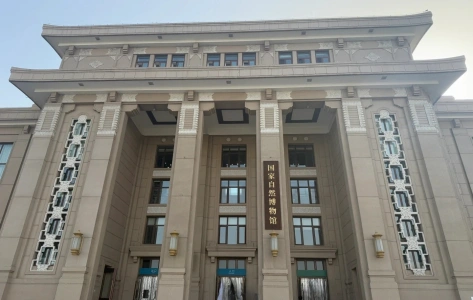
National Natural History Museum Map
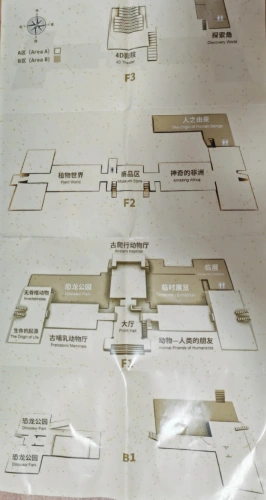
Why You Should Visit the National Natural History Museum of China
Extensive Collections and Exhibitions
The museum features an impressive range of priceless artifacts, including complete fossil skeletons of Mamenchisaurus from Jianyang and Lufengosaurus huenei. These fossils not only illustrate the Earth’s prehistoric timeline and the evolution of life but also offer invaluable research opportunities. In addition, the museum frequently hosts educational science events, making it ideal for all age groups. Through hands-on interactive displays, visitors can engage with the fascinating world of natural science in fun and meaningful ways.
Unique Exhibition Themes
For example, the Owl Exhibit explores the biology and ecological behavior of various owl species, providing a fresh perspective on these mysterious nocturnal birds. Another highlight is the 4D science film Deep Ocean, which uses virtual reality technology to immerse the audience in the wonders—and fragility—of marine ecosystems. This kind of experiential learning greatly enhances visitor engagement and educational impact.
Top Things to Do in the National Natural History Museum of China
Main Attractions
The Rise of Vertebrates
This exhibit follows a grand evolutionary timeline, showcasing how vertebrates evolved from ocean dwellers to land-based species—from reptiles to mammals. It presents a diverse array of specimens, including fish, amphibians, reptiles, birds, and mammals. Visitors will learn how different species adapted to their environments for survival, offering both young learners and adult visitors a compelling journey into biological diversity and evolution.
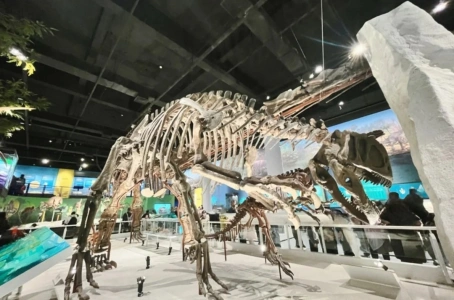
Ancient Mammals
This is one of my personal favorite sections in the museum. It features rare fossils of prehistoric mammals such as mammoths, woolly rhinoceroses, and saber-toothed cats. The exhibit explains their habitats and lifestyles while connecting their evolutionary traits to modern mammals. Notably, the fossil of Eomaia scansoria—one of the earliest known placental mammals—is displayed here. Its scientific importance in understanding mammalian origins cannot be overstated.
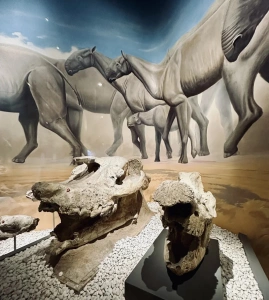
The World of Plants
This area is a deep dive into our “green planet.” Through life-sized models, authentic specimens, and multimedia interactions, the exhibit illustrates the evolutionary journey of plants—from algae to angiosperms—and their essential roles in ecosystems. Ancient ferns, gymnosperms, and vivid tropical flora create an immersive forest-like atmosphere. It’s a must-visit for anyone interested in Earth’s ecological balance and the power of plant life.
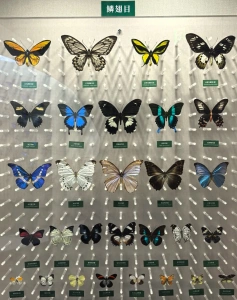
4D Films
As one of the museum’s most exciting interactive features, the 4D cinema offers an immersive movie experience that focuses on themes such as Earth’s evolution, the age of dinosaurs, and deep-sea exploration. With 3D visuals, motion seats, and environmental effects, the audience is placed right at the heart of the action, making it a thrilling way to experience the ancient world.
- Fee: RMB 20 per person; tickets must be purchased on-site
- Note: Not recommended for children under 5 years old, as it may cause discomfort or fear
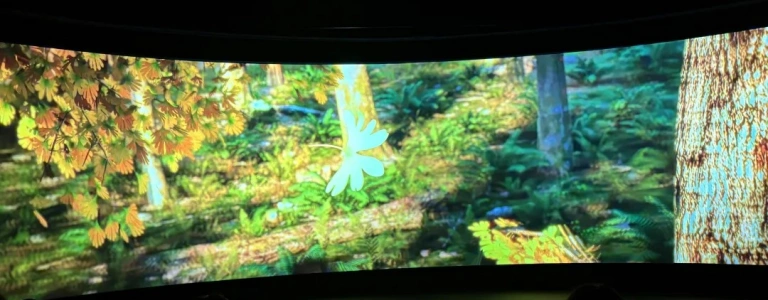
Ticket Guide for the National Natural History Museum of China
Admission to the regular exhibitions at the National Natural History Museum of China is free, but visitors must make an advance reservation. On-site reservations are not available. If you haven’t reserved a ticket in advance, you can still purchase a ticket for a special exhibition at the entrance for RMB 20, which grants you access to the museum.
How to Reserve Tickets
- Online: Through the museum’s official WeChat account.
- On-site: Buy a special exhibition ticket for RMB 20.
Guided Tours at the National Natural History Museum of China
The museum offers multilingual audio guides to help visitors understand its rich exhibits.
- Supported Languages: Chinese, English, Japanese, and Korean
- Cost: RMB 20 (deposit of RMB 200 required)
Recommended Visiting Route Inside the National Natural History Museum
Upon entering each exhibition hall, it’s best to start from the left wall and move along the perimeter.
- Begin with the Paleo Reptiles exhibit, located at the center of the first floor. It showcases the complex transition of vertebrates from aquatic to terrestrial life. The largest specimen here is a 26-meter-long Mamenchisaurus.
- Head down to the Dinosaur Park on B1, where you’ll find lifelike, animatronic dinosaurs. The exhibit vividly recreates the dinosaur ecosystems from the Late Triassic to the Late Cretaceous. Highlights include the Yangchuanosaurus, a Jurassic apex predator.
- Return to the first floor and visit the Invertebrates gallery on the north side, which traces life from prokaryotes to eukaryotes, from single-celled to multicellular organisms, and eventually to vertebrates. Don’t miss the stunning ammonite specimens!
- Right next door is The Origin of Life, focusing on the flourishing of prokaryotic organisms.
- Visit the Ancient Mammals hall, another major highlight. This area compares mammals with reptiles and features fossils of mammoths, the Yellow River Elephant, and the museum’s crown jewel—Eomaia scansoria, one of humanity’s earliest known ancestors.
- Stop by the Animals—Friends of Humanity exhibit, also on the first floor, for a quick glance at various animal specimens.
- Proceed to the Aquarium in the southwest corner of the first floor and head down to B1. It contains a small but intriguing collection of marine life.
- Move up to the second floor and begin at the World of Plants. This exhibit covers the evolution of plants from algae to conifers, showcasing different leaf shapes, flowers, and fruits.
- At the center of the second floor is the gift shop, but it’s best to first explore the Amazing Africa and Maasai exhibitions. You’ll see cheetahs, warthogs, lions battling hyenas—an immersive experience that transports you to the African savanna.
- Finish your visit at the gift shop. You’ll find items like dinosaur toys and refrigerator magnets worth picking up.
How to Get to the National Natural History Museum of China from Central Beijing
The most convenient way for independent travelers is by subway, as the nearest station is located very close to the museum entrance.
By Subway
From central Beijing, take Metro Line 8 and get off at Tianqiao Station. Exit from Exit B; the museum is just outside the station.
- Transportation Card Purchase: Klook Deals, KKday Offers
By Bus
Take any of the following bus lines: 7, 20, 35, 110, 120, 692, 707, or 729. Get off at Tianqiao Station and walk for about 5 minutes to reach the museum.
- Transportation Card Purchase: Klook Deals, KKday Offers
By Taxi or Ride-Hailing
A taxi or ride-hailing service from within Beijing takes about 20 minutes and typically costs around RMB 20.
FAQ
Yes, the museum is stroller- and wheelchair-friendly. Free wheelchair rentals are also available for visitors in need.
Luggage storage is available after the security check at the museum entrance. The free storage area can accommodate luggage up to 20 inches in size.
Essential Beijing Travel Resources
- Comprehensive Beijing Travel Guide 📖
- Beijing Travel Recommendations 🏙️
- Hotel Recommendations 🏨
- Transportation Guides ✈️ 🚇 🚄 🚆
- Essential Travel Tips & Tools 🗺️ 🍜 📱 💸 🌤️ 💊

 English (Singapore)
English (Singapore)
 English (US)
English (US)  English (Hong Kong)
English (Hong Kong)  English (Malaysia)
English (Malaysia)  繁體中文
繁體中文 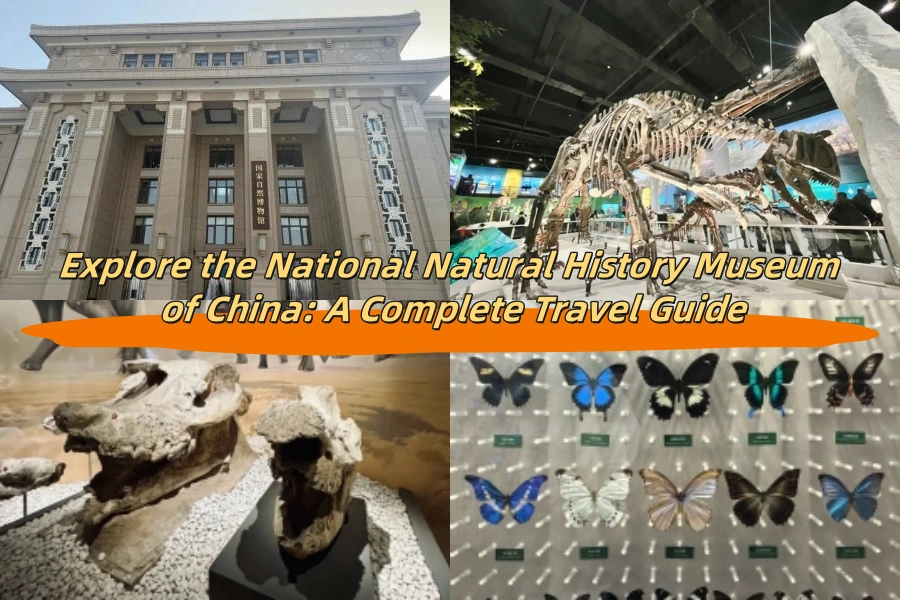
Comment (0)